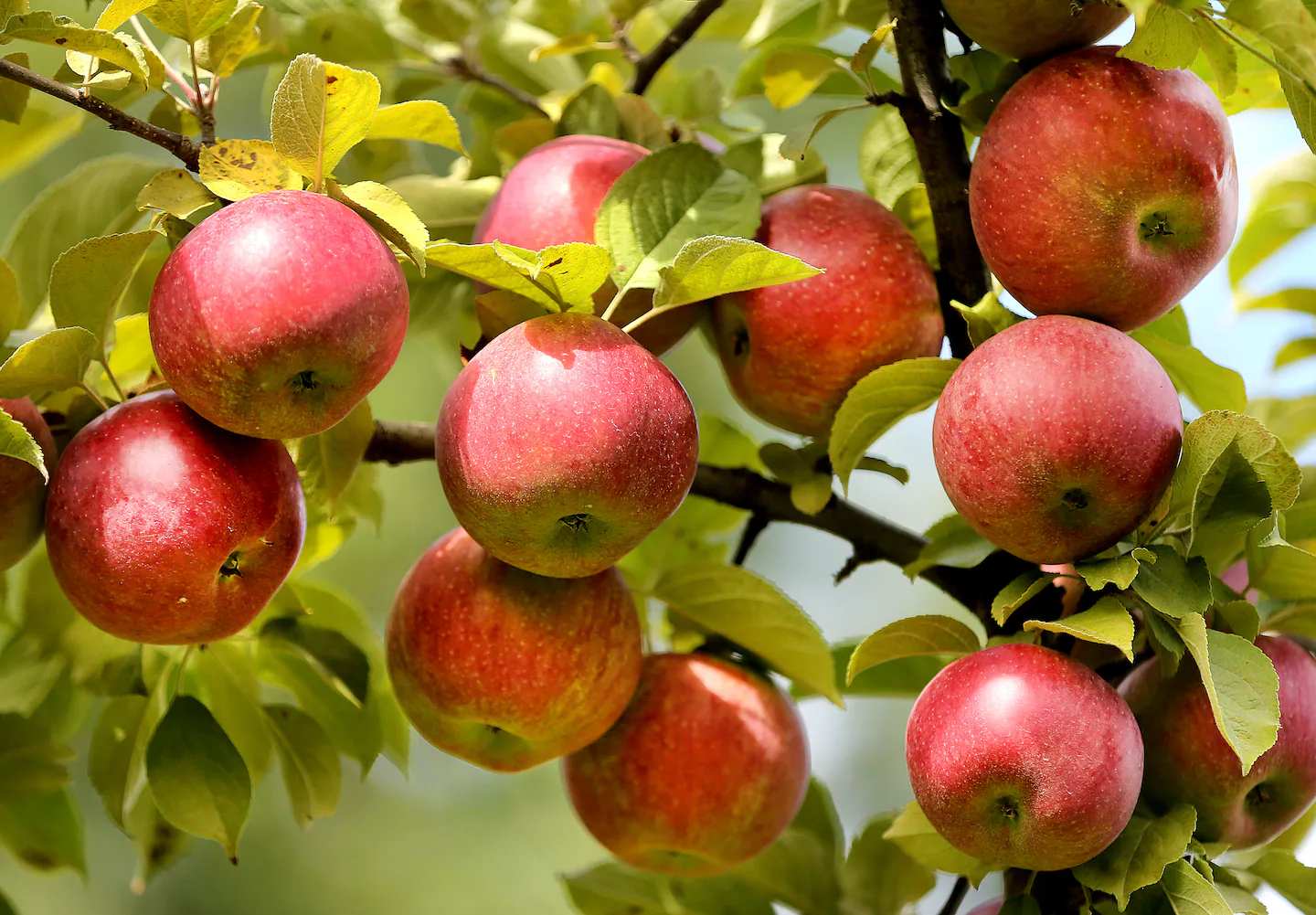
For a quick trip: Nashoba Valley Winery; Bolton
“It’s beautiful, and they have an incredible heirloom orchard with more than 100 varieties,” she says, with many rarer varieties.
Core tip: Call ahead to ask if it’s a good time to pick.
“That way, they can control how many people are picking all the rarer trees,” she says.
For a day trip with the fam: Alyson’s Orchard; Walpole, N.H.
“They have beautiful views, lots of apple varieties, and a little bit of family entertainment,” she says.
Another plus: plenty of apple varieties.
For a classic excursion: Honey Pot Hill Orchards; Stow
Plan to block off several hours, because this 99-year-old orchard fills up thanks to an array of family-friendly autumnal attractions: farm animals, hayrides, mazes.
“It’s a really busy orchard, but that’s sort of part of the fun, I think. It’s a ritual, and they have a good variety. It’s close, it’s special, and as Bostonians, I feel like it’s ‘our’ orchard,” Traverso says.
For cider: Clarkdale Fruit Farms; Deerfield
“It’s owned by the lovely Clark family, with lots of apple varieties. It’s a beautiful spot, and they’re just the best people,” Traverso says.
They’re also active in CiderDays, an annual Franklin County festival that happens every November at orchards throughout the area with samples, entertainment, and more.
“There are dozens of cider producers in one spot. … It’s so authentic and homegrown,” she says.
For a weekend getaway: Scott Farm Orchard; Dummerston, Vt.
“This is where they filmed ‘The Cider House Rules,’ and they have an incredible program: I think there are up to 150 varieties of apple at this point,” Traverso says.
The orchard also offers educational programs and overnight stays. Rent the cottage where Rudyard Kipling wrote “The Jungle Book” or cozy up in an early 1900s sugarhouse.
How do you like them apples?
From sweets to snacks, here’s which apples to use and when.
Firm and tart; good for heavier baked desserts: Traverso recommends varieties such as Granny Smith, Northern Spy, and Suncrisp.
Firm and sweet; good for lighter baked desserts: Opt for Baldwin, Golden Delicious, Honeycrisp, and Jonagold.
“For pies and crisps, I like to mix firm-sweet and firm-tart apples to get a nice balance. Honestly, the more varieties, the better. Apple-picking is so good because, if you take five different varieties and put them in your pie, you’re getting into such a range of flavors and textures,” she says.
Tender and tart; best for sauces and snacking: Look for Cortland, McIntosh, and one of Traverso’s personal favorites, Macouns.
“They have a wonderful flavor, and they will turn to applesauce really quickly,” she says.
Tender and sweet; also good fresh and in sauces: Ambrosia, Fuji, Gala.
“Tender sweets, which are the rarest, I like to use fresh or in a salad, and that’s about it. I wouldn’t [heat them] unless you’re doing something like pancakes, where they cook really fast and they’re not going to get mushy,” she says.
As for when to go picking? Aim for early October.
“It’s sort of the middle of the bell curve of the season. You’re going to have a lot of varieties that are ripe at that moment. It’s the maximum variety. It’s when the foliage starts to turn. Really, it’s just the perfect moment to go,” Traverso says.
Running behind? Don’t despair. Traverso also loves the resilient and peculiar Calville Blanc, which peaks in early November and is often used in Tarte Tatin, a buttery French pastry made with caramelized apples.
“It’s gorgeous. It has this knobbed appearance, so that it almost looks like a quince. It’s really unusual. And boy, the flavor: There are 50 different layers of flavor to this thing. You’re just baking the heck out of it, and it really holds up, and holds its shape. That’s the one I wait for,” she says.



